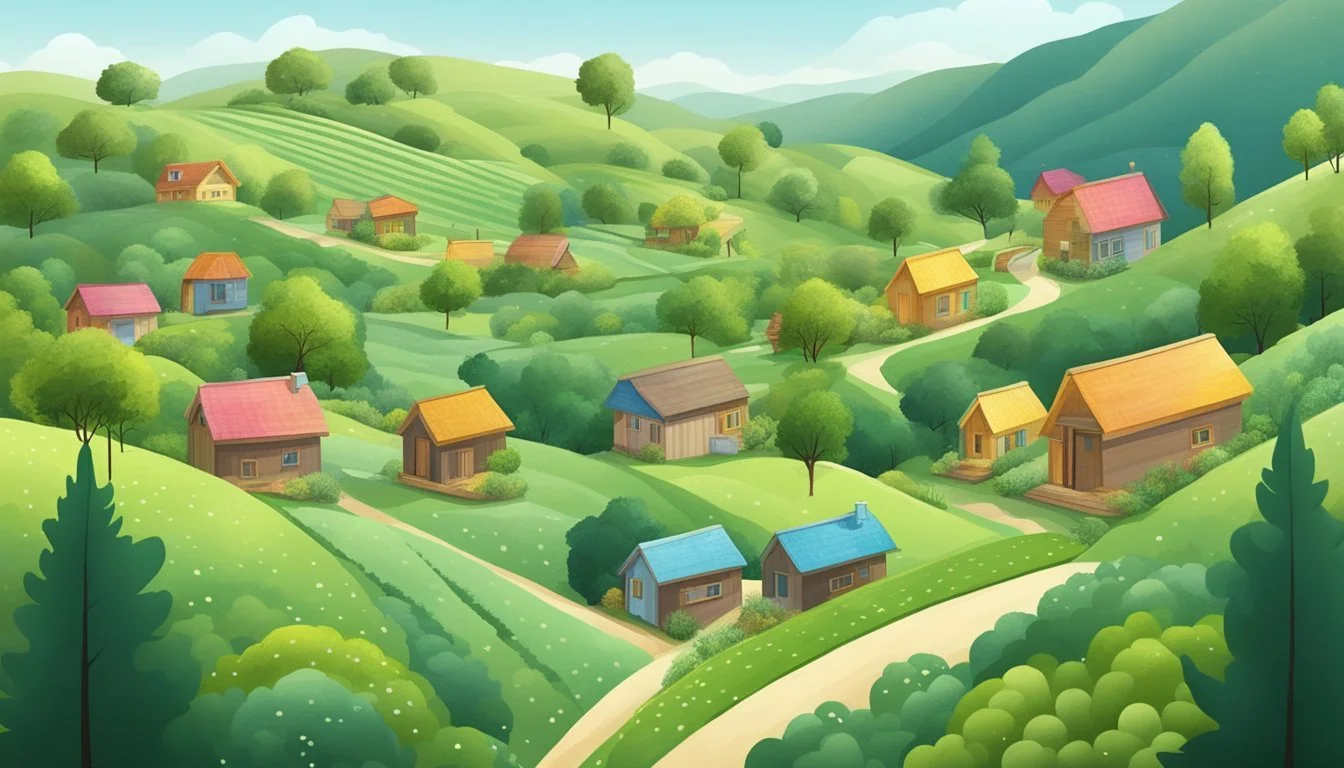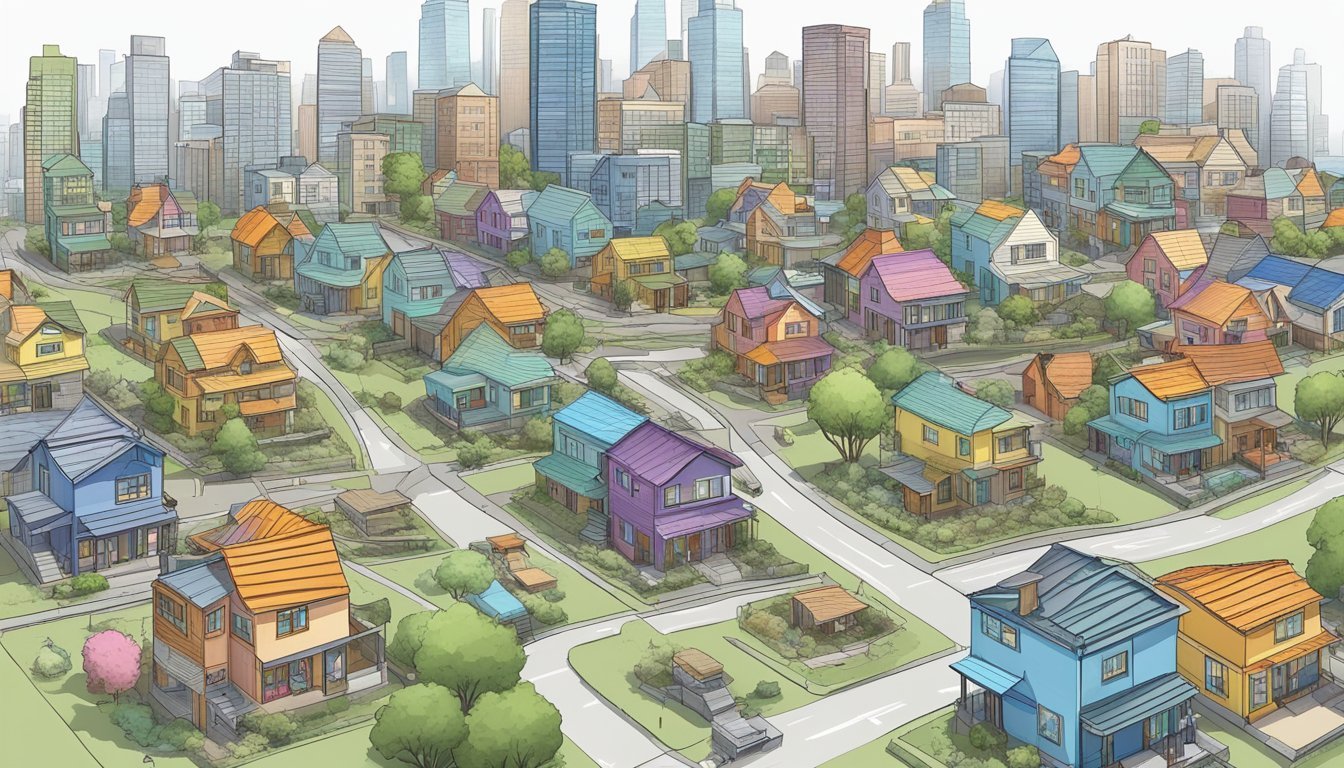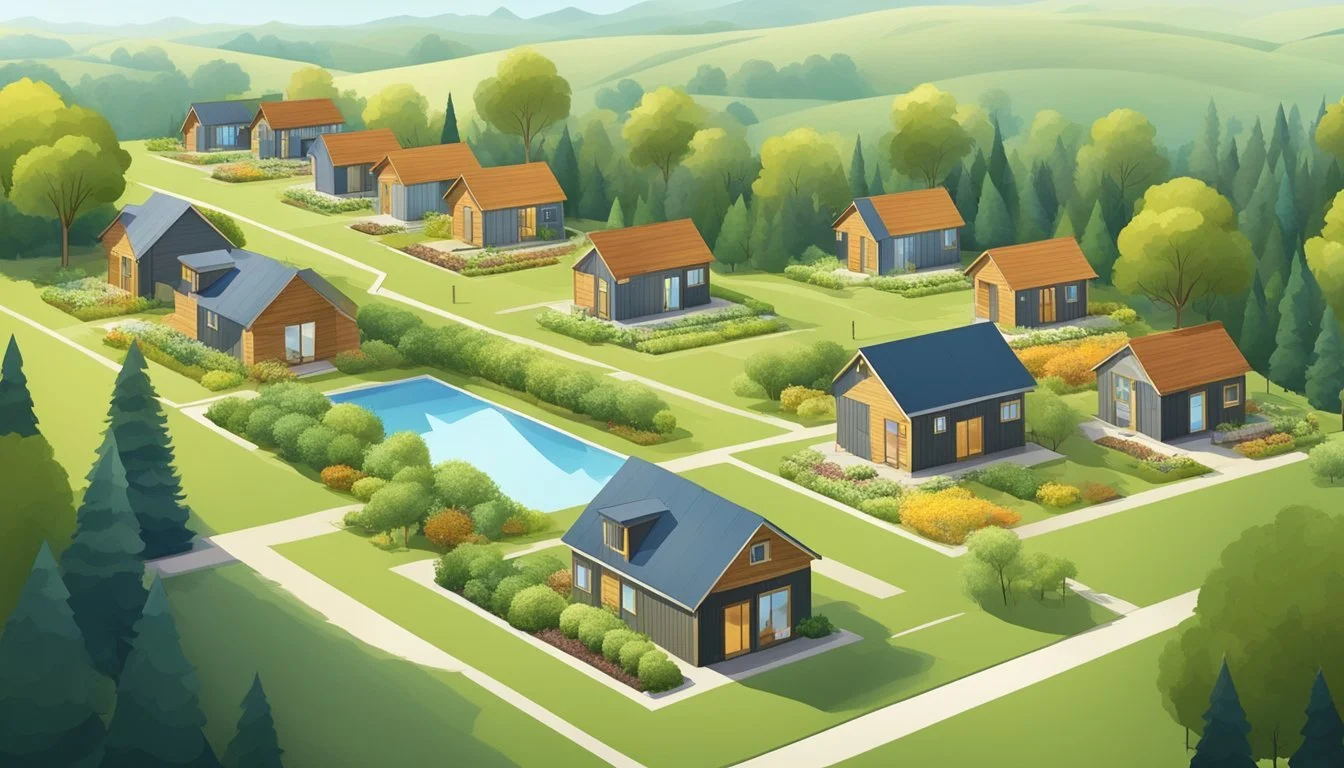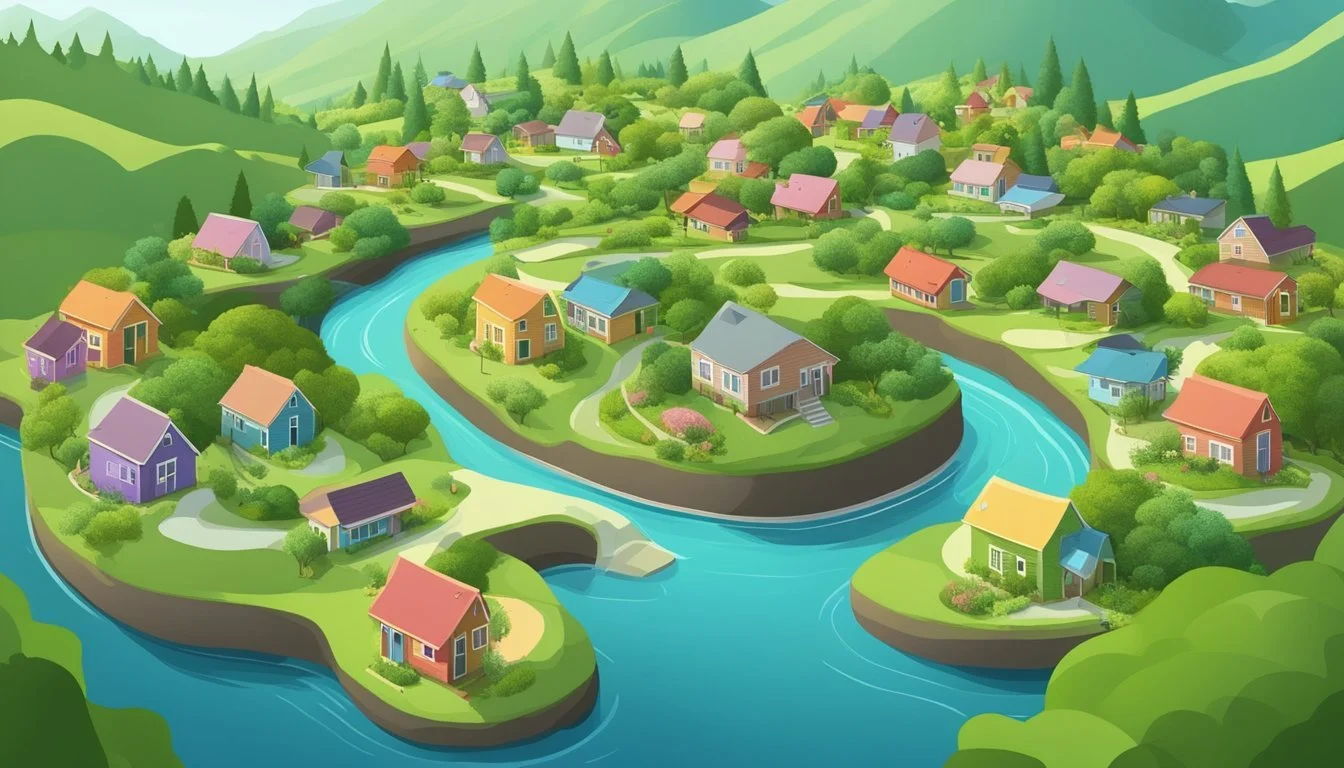Free Land for Tiny House Communities
Building Small Living Spaces for Modern Living
Are you intrigued by the idea of living in a tiny house but unsure where to find free land for your dream home? Tiny house communities offer an innovative solution, combining sustainable living with a minimalist lifestyle. These growing communities provide a sense of belonging and shared values among residents, often featuring communal spaces and shared gardens. Discovering free land for tiny house communities means embracing a lifestyle centered around simplicity, affordability, and environmental consciousness.
Across the country, various tiny home communities are sprouting up, offering unique opportunities to settle into small living spaces. Examples include Escalante Village in Durango, Colorado, nestled among the scenic La Plata Mountains, and Orlando Lakefront in Florida, which has transformed into a vibrant hub for tiny house enthusiasts. These communities not only offer a place to live but also foster a supportive network of neighbors who share a common vision.
If you're considering joining a tiny house community, it's essential to understand the building and zoning laws in your area. Some regions have specific regulations that determine where these communities can be established. Reading the fine print of these laws is crucial for setting up or joining a tiny house neighborhood. With the right information, you can find the perfect spot to build your tiny home and enjoy a fulfilling, pared-down lifestyle.
The Appeal of Tiny Living
Tiny living offers an efficient and community-focused lifestyle. It emphasizes minimalism, sustainability, and stronger social connections.
Tiny House Movement Fundamentals
The tiny house movement advocates for living in smaller spaces, usually between 100 and 400 square feet. This movement emerged as a response to increasing housing costs and a desire for simpler, more sustainable living.
People are drawn to tiny homes for their reduced environmental impact. Smaller homes require fewer building materials and less energy for heating and cooling. Many tiny homes incorporate renewable energy sources, such as solar panels, to enhance their environmental friendliness.
Cost is another significant factor. Building or purchasing a tiny house is much more affordable than traditional homes, making homeownership accessible to more people.
Lifestyle and Community Benefits
Living in a tiny house promotes a minimalist lifestyle, encouraging individuals to prioritize what truly matters. Decluttered spaces and fewer possessions can lead to a less stressful and more fulfilling life.
Tiny house communities foster a strong sense of community. These communities often have shared spaces and amenities, encouraging interaction and collaboration among residents. They create opportunities for social engagement and mutual support, addressing the isolation common in suburban living.
Furthermore, tiny house living supports a flexible lifestyle. With smaller financial commitments, individuals can allocate more time and resources to experiences, travel, and personal growth. This freedom and flexibility make tiny living an attractive option for many.
Legal Framework and Zoning Regulations
Regulations for tiny houses are influenced by local zoning laws, building codes, and construction standards. Understanding these legal requirements is essential for anyone looking to build or place a tiny home.
Understanding Local Laws and Zoning
Local zoning laws vary widely by state, city, and even neighborhood.
Location: Tiny houses on foundations are often treated as Accessory Dwelling Units (ADUs) and must meet local zoning requirements. This can include where they are permitted to be placed.
Size Requirements: Some municipalities have minimum size requirements, often 700 or 1,000 square feet, which can be a challenge for tiny homes under 400 square feet.
Classification: Tiny houses on wheels (THOWs) are often classified differently, such as Recreational Vehicles (RVs), and need to comply with specific zoning that allows RVs.
Navigating these laws requires thorough research and sometimes advocacy to adjust regulations to better fit tiny house communities.
Building Codes and Construction Standards
Building codes are critical to ensure safety and compliance for tiny houses.
Compliance: Tiny homes must meet International Residential Code (IRC) standards or local building codes. This includes aspects like structural integrity, plumbing, and electrical systems.
RV Standards: For THOWs, the Recreational Vehicle Industry Association (RVIA) certification can be necessary. This ensures the tiny house meets safety standards similar to those for RVs.
Utility Connections: Addressing utility connections such as water, sewage, and electricity is essential. This may require following specific code requirements depending on whether the tiny house is on wheels or a foundation.
Being informed about these codes helps in ensuring that all parts of the tiny house are safe and up to standard.
Finding and Acquiring Free Land
Securing free land for tiny house communities can be achieved through thorough research, negotiations with landowners, and leveraging real estate agents and listings.
Research and Resources
Identifying free land requires a solid strategy and use of the right resources. Online platforms such as Zillow and Land Watch can provide insights into available properties. Potential resources also include local government programs offering incentives for land use, especially in rural areas where development is encouraged.
Joining tiny house forums and networking can uncover opportunities. Look into land databases and public records for unclaimed or abandoned properties that might be secured at minimal or no cost.
Negotiating with Landowners
Approaching landowners directly can sometimes lead to acquiring free land. Crafting a compelling proposal that outlines the benefits of a tiny house community can be persuasive. Benefits might include increased property value and the potential for shared maintenance costs.
It's crucial to address landowners’ concerns about zoning laws and community impact. Sharing success stories from other tiny house communities can build trust. Always ensure to have legal advice during negotiations to ensure the agreements are binding and clear.
Real Estate Agents and Listings
Real estate agents play a crucial role in finding land. They can have access to off-market deals and know local areas well. Real estate agents with experience in tiny house communities are particularly valuable. Discuss your specific needs with them, and they might discover opportunities not listed publicly.
Listings on sites like Trulia, Lands of America, and Land and Farm offer a variety of options. Real estate agents can help navigate these listings to find potential free land opportunities, sometimes even negotiating lower prices or free leases for community-oriented projects. This could significantly expedite the process of establishing a tiny house community.
Designing Tiny Home Communities
Designing tiny home communities requires careful planning of layout and infrastructure, as well as thoughtful consideration of amenities and shared spaces to foster cooperation and sustainable living.
Community Layout and Infrastructure
The layout of a tiny home community is critical for functionality and aesthetic appeal. Homes should be arranged to maximize space while promoting privacy and community interaction. Zoning laws and building codes must be adhered to, ensuring safety and legality.
Eco-friendly infrastructure like solar panels and rainwater collection systems can enhance sustainability. Roads and pathways must be designed for both foot and vehicle traffic, ensuring accessibility. Essential utilities such as water, electricity, and sewage systems must be efficiently integrated.
A well-planned layout includes designated areas for parking, green spaces, and possibly communal gardens. Proper infrastructure planning is vital to create a functional and appealing tiny home community.
Amenities and Shared Spaces
Amenities and shared spaces play a key role in the success of tiny home communities. Communal areas such as kitchens, laundry rooms, and recreational facilities encourage interaction and cooperation among residents. Shared spaces should be versatile and designed to meet various needs, from social gatherings to individual hobbies.
Green building materials and energy-efficient designs promote a sustainable lifestyle. Incorporating elements like community gardens and composting areas not only supports environmental goals but also enhances the quality of life for residents.
Cooperative housing structures and joint maintenance efforts can reduce costs and promote a sense of ownership and responsibility among community members. These shared amenities and spaces help build a supportive and engaged community.
Utility Management in Tiny House Communities
Effective utility management is crucial for tiny house communities to ensure a sustainable and comfortable living environment. This includes the development and maintenance of reliable water and power solutions as well as eco-friendly waste disposal methods.
Water and Power Solutions
Tiny house communities often utilize solar panels for power generation, harnessing renewable energy to reduce reliance on traditional power grids. Solar panels are not only eco-friendly but can also help lower utility costs.
Water management includes securing a reliable supply of potable water. This might involve rainwater harvesting systems combined with filtration to ensure safe drinking water. Additionally, water-efficient fixtures, like low-flow showers and faucets, help conserve water use.
In terms of power, besides solar panels, tiny houses might use battery storage systems to store excess energy generated during the day for use at night. Communities may also tap into local utilities if renewables are insufficient.
Waste Disposal and Sustainability
Proper waste disposal is vital for maintaining hygiene and sustainability in tiny house communities. Composting toilets are commonly used as they require less water and turn waste into usable compost, reducing the environmental footprint.
Managing solid trash involves setting up communal collection points and encouraging recycling practices. Communities might use septic systems for gray water or connect to municipal sewage systems where available.
Sustainability practices extend to the use of eco-friendly building materials and incorporating practices like shared amenities to minimize resource use. This holistic approach to utility management helps tiny house communities remain efficient and environmentally conscious.
Community Life and Activities
Tiny house communities offer a blend of natural beauty and social opportunities that enrich the lives of their residents. From engaging outdoor activities to vibrant community events, these communities provide a supportive and connected environment.
Outdoor Activities and Natural Beauty
Residents of tiny house communities often enjoy various outdoor activities that take full advantage of the natural surroundings. Hiking and camping are popular, especially in areas like the Colorado Rockies, where breathtaking trails and scenic campgrounds are abundant.
Fishing is another favorite pastime, with many communities situated near lakes or rivers. Residents can spend their mornings or afternoons casting a line in peaceful settings.
Gardens and community gardens are central features in many tiny house communities. These spaces not only provide fresh produce but also offer a place for residents to connect with nature and each other. Gardening becomes a communal activity where everyone can share in the work and harvest.
Community Events and Social Gatherings
Community events play a crucial role in fostering a sense of belonging among residents. Regular potlucks and barbecues provide opportunities for socializing and enjoying homemade meals together. These gatherings often feature local music and entertainment, enhancing the communal atmosphere.
Workshops and skill-sharing sessions are common, covering topics from sustainable living to DIY home projects. These events encourage learning and collaboration, helping residents develop new skills and strengthen ties.
Seasonal festivals and celebrations are highlights in many tiny house communities. Events like a summer solstice festival or autumn harvest party bring residents together to celebrate and enjoy the changing seasons. These moments create lasting memories and deepen community bonds.
Facilities and Add-On Services
Tiny house communities often come equipped with various facilities and add-on services that enhance the living experience, including health and recreational amenities, as well as security and maintenance services.
Health and Recreation Facilities
Health and recreation facilities are vital for community well-being. Many tiny house communities incorporate a fitness center to promote physical health. These centers often include a range of exercise equipment and spaces for group classes. Pools are another popular amenity, providing residents with a place to relax and exercise.
In addition, communities may feature a clubhouse, which serves as a social hub. Clubhouses often have common areas for gatherings, events, and activities. Some communities also offer a spa for relaxation and wellness treatments. For pet owners, a dog park is a valuable addition, providing a safe and convenient area for pets to play and socialize.
Security and Maintenance Services
Security and maintenance services are essential to ensure a safe and well-maintained environment. Many tiny house communities employ security personnel to monitor the area and address any concerns. Additionally, security features like gated access and surveillance cameras enhance residents' peace of mind.
Maintenance services cover routine upkeep and repairs, helping to keep the community in top condition. This may include landscaping, road maintenance, and snow removal in colder regions. Some communities also provide laundry facilities, offering convenient solutions for residents' laundry needs.
By offering these facilities and services, tiny house communities strive to create a comfortable, secure, and engaging living environment for all residents.
Profiles of Notable Tiny House Communities
Several notable tiny house communities across the United States offer unique living experiences, from mountain retreats to coastal escapes. These communities provide various amenities and settings that cater to different lifestyles and preferences.
LuxTiny - Arizona's Pioneering Community
LuxTiny is a pioneering tiny home community situated in Lakeside, Arizona. Established in the scenic White Mountains, LuxTiny offers a blend of natural beauty and modern convenience. The community features tiny homes that range from 160 to 399 square feet, providing a minimalist yet comfortable living experience.
Residents enjoy access to amenities like a community garden, walking trails, and a communal clubhouse for social gatherings. With its stunning mountain views and serene environment, LuxTiny caters to those seeking a peaceful lifestyle amidst nature.
Tiny Tranquility - A Coastal Retreat in Oregon
Tiny Tranquility is a coastal tiny house community located in Waldport, Oregon. This community stands out for its proximity to the Oregon coast, offering residents breathtaking ocean views and easy access to the beach.
Tiny Tranquility features around 43 sites for tiny homes, each equipped with full hookups and beautiful landscaping. The community amenities include a lodge with a communal kitchen, a greenhouse, and a vintage trailer for visitors. The coastal setting and communal spirit make Tiny Tranquility a desirable location for tiny house living.
Escalante Village - Colorado's Natural Escape
Escalante Village is nestled in Durango, Colorado, at the base of the La Plata Mountains. This tiny home community provides a unique opportunity to live amidst the natural beauty of Colorado. The homes here average around 400 square feet, offering a balance between compact living and comfort.
The community promotes an outdoor lifestyle with ample opportunities for hiking, fishing, and other recreational activities. Escalante Village’s layout and design foster a sense of community while ensuring privacy and space for each resident.
Cedar Springs Tiny Village - Ohio's Rustic Haven
Cedar Springs Tiny Village is Ohio’s first tiny home village, located in New Paris, Ohio. This rustic haven is about an hour away from Columbus, Cincinnati, and Indianapolis. Cedar Springs Tiny Village boasts a picturesque setting with views of a beautiful lake, providing a peaceful and scenic environment for its residents.
The community includes various tiny homes, each designed with sustainability and efficiency in mind. Amenities like walking trails, communal spaces, and a lakefront enhance the rustic charm of this tiny house village, making it a perfect spot for those looking to downsize and connect with nature.
Challenges and Considerations
Building tiny house communities on free land comes with various challenges and important considerations. Key aspects include addressing financial concerns and managing community dynamics.
Dealing with Financial Considerations
Securing affordable housing often involves navigating complex financial landscapes. Budgeting is essential when planning a tiny house community, especially regarding the initial purchase or lease of the land, as well as ongoing costs.
Buying land outright can be expensive, requiring careful financial planning and potential loans. Alternatively, renting can offer more flexibility but may come with restrictions on building and long-term security.
Grants and subsidies from government programs or non-profits can alleviate some financial stress. Community fundraising or collective ownership models can also distribute the cost, making tiny house living more attainable.
Managing Community Dynamics
Creating a harmonious living environment requires addressing various social and logistical factors. Establishing clear community rules and norms is vital to ensure smooth day-to-day operations and address potential conflicts swiftly.
Shared resources, such as gardens, laundry facilities, and common spaces, can foster a sense of unity but also need strict management to avoid misuse.
Engaging community members in decision-making processes helps maintain transparency and collective buy-in. Regular meetings and open communication channels are key to minimizing misunderstandings and fostering a cooperative atmosphere.
Proper zoning laws and local building codes must be adhered to, often requiring professional guidance to navigate legal complexities effectively.
Future and Trends
The future of tiny house communities points to innovative approaches that emphasize sustainability and eco-friendly living while offering strong growth potential in the housing industry.
Innovations in Tiny Living
Tiny homes are leveraging technological advancements to enhance sustainability and reduce the carbon footprint. Solar panels, rainwater harvesting systems, and composting toilets are increasingly common features. These homes often integrate smart home technologies to maximize energy efficiency.
Communal amenities, such as shared gardens and workspaces, are on the rise. These shared facilities not only foster community connections but also contribute to a lower environmental impact. Expect advancements in building materials too, with recycled and eco-friendly options being used more widely.
Growth Projections and Potential
The tiny house market is set to grow significantly. Current forecasts predict the market will see a substantial increase, with a compound annual growth rate of 4.88% from 2022 to 2027. Affordability drives this growth, with tiny homes typically priced between $10,000 to $30,000.
The trend is expanding globally, reaching beyond the US to regions like Europe, the Middle East, and Africa. Besides individual buyers, city authorities are promoting tiny homes as part of housing crisis solutions. Adaptations in zoning laws are making it easier to integrate tiny homes into urban settings, encouraging dense and creative use of space.
With these developments, tiny houses are not just homes but a serious contender in the future housing market.











